The Passenger Documented: Airline Luggage Labels, Bag Tags, and Tickets
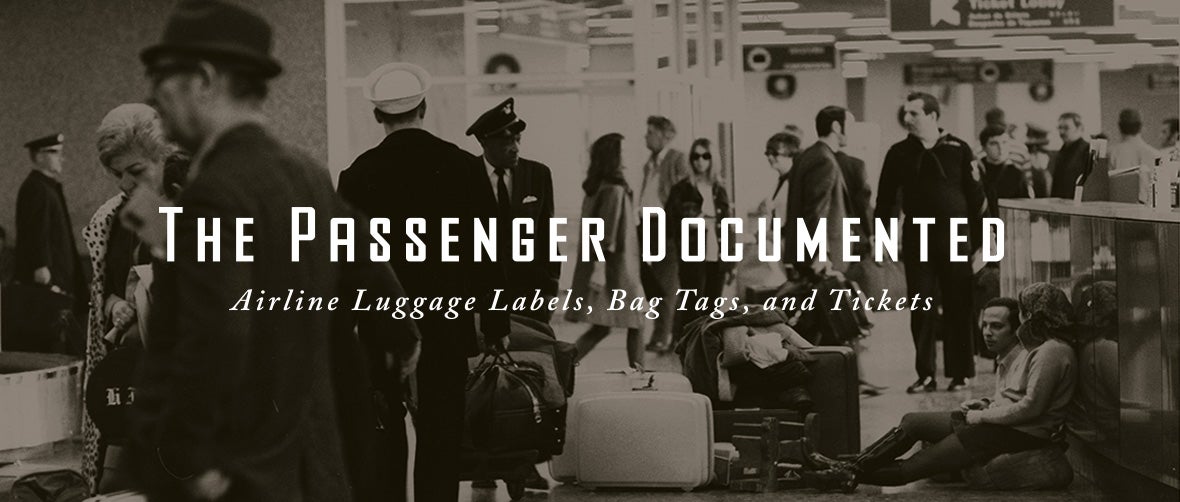
The Passenger Documented:
Airline Luggage Labels, Bag Tags, and Tickets
Luggage Labels
Following the development of airline commercial passenger services in the 1920s, luggage-label art became an important tool for advertising air services. Labels were usually illustrated with the airline’s logo and the latest aircraft in its fleet, and often included destinations, route maps, or light and dark backgrounds symbolizing night and day service. During the 1930s, 40s and 50s, the art on luggage labels reached a high level of sophistication, comparable to that found on airline travel posters.
Identification Tags
A more durable form of identification, crew tags, along with V.I.P. frequent-flyer tags were usually crafted from thick plastic or leather and came with leather straps. Crew tags usually featured the carrier’s color scheme and logo, with names, titles, and contact information permanently inscribed. Standard complimentary passenger tags were usually plastic, cardboard, or a combination of both, with the airline’s logo embossed on one side and lines where a name, address, and phone number could be hand-written or typed on the paper, plastic, or paper insert on the opposite side.
Destination Tags
By the 1930s, airlines were issuing paper luggage destination tags with standardized information, as specified by the Warsaw Convention of 1929. Each tag included the place of departure, the destination, the name and address of the carrier, the ticket number, and the number and weight of bags. Up until the 1990s, tags were attached to bags by a string and contained the airline’s name, flight number, record locator, and the International Air Transport Authority (IATA) code for the destination airport. Since the 1990s, cardboard luggage destination tags have been replaced by tape-like loop tags that are attached by adhesive and are imprinted with bar codes for easy computer recognition.
Tickets
Beginning in the 1930s and continuing into the present, airline tickets have consisted of long, rectangular strips of paper, or coupons, for each leg of a flight. The information contained on the ticket became standardized among airlines after the Warsaw Convention of 1929. This agreement stipulated that tickets contain the name of the purchaser, the name and address of the carrier, the date and place of issue, the place of departure and terminus, along with designated stopping places. Tickets could be purchased by phone, at the carrier’s ticket office, at the airport, or through a travel agency and usually came in a jacket that incorporated the name and logo of the carrier, along with aircraft and service promotions. A flight packet with information about the airline, the flight, and the destination was often included.
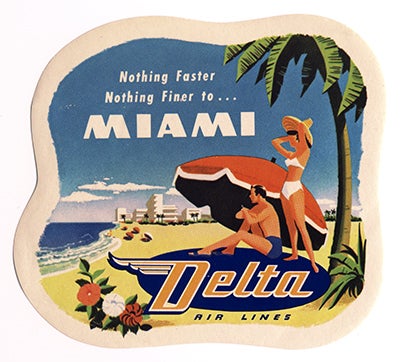
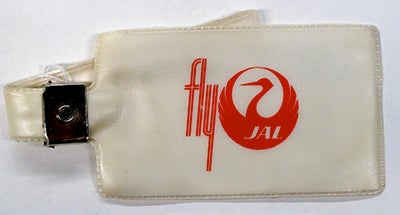
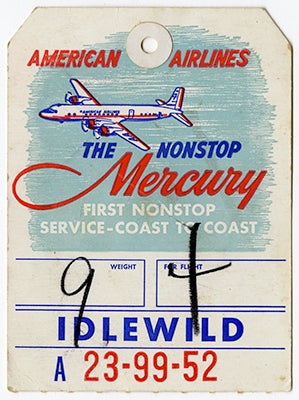
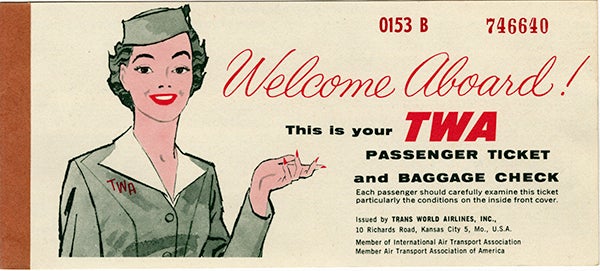
[images]
Delta Air Lines Miami luggage label 1950s
paper, ink, adhesive
SFO Museum
Gift of Thomas G. Dragges in memory of Robert May
2001.109.126
L2014.1101.013
JAL (Japan Air Lines) luggage identification tag 1960s
plastic
SFO Museum
Gift of Thomas G. Dragges
2003.027.177
L2014.1101.033
American Airlines Mercury Service baggage destination tag 1950s
paper, ink
SFO Museum
Gift of Thomas G. Dragges
2003.200.016.034
L2014.1101.067
TWA (Trans World Airlines) ticket 1957
paper, ink
SFO Museum
Gift of Constance Ogilvie
2002.073.042
L2014.1101.089
©2014 by the San Francisco Airport Commission. All rights reserved.